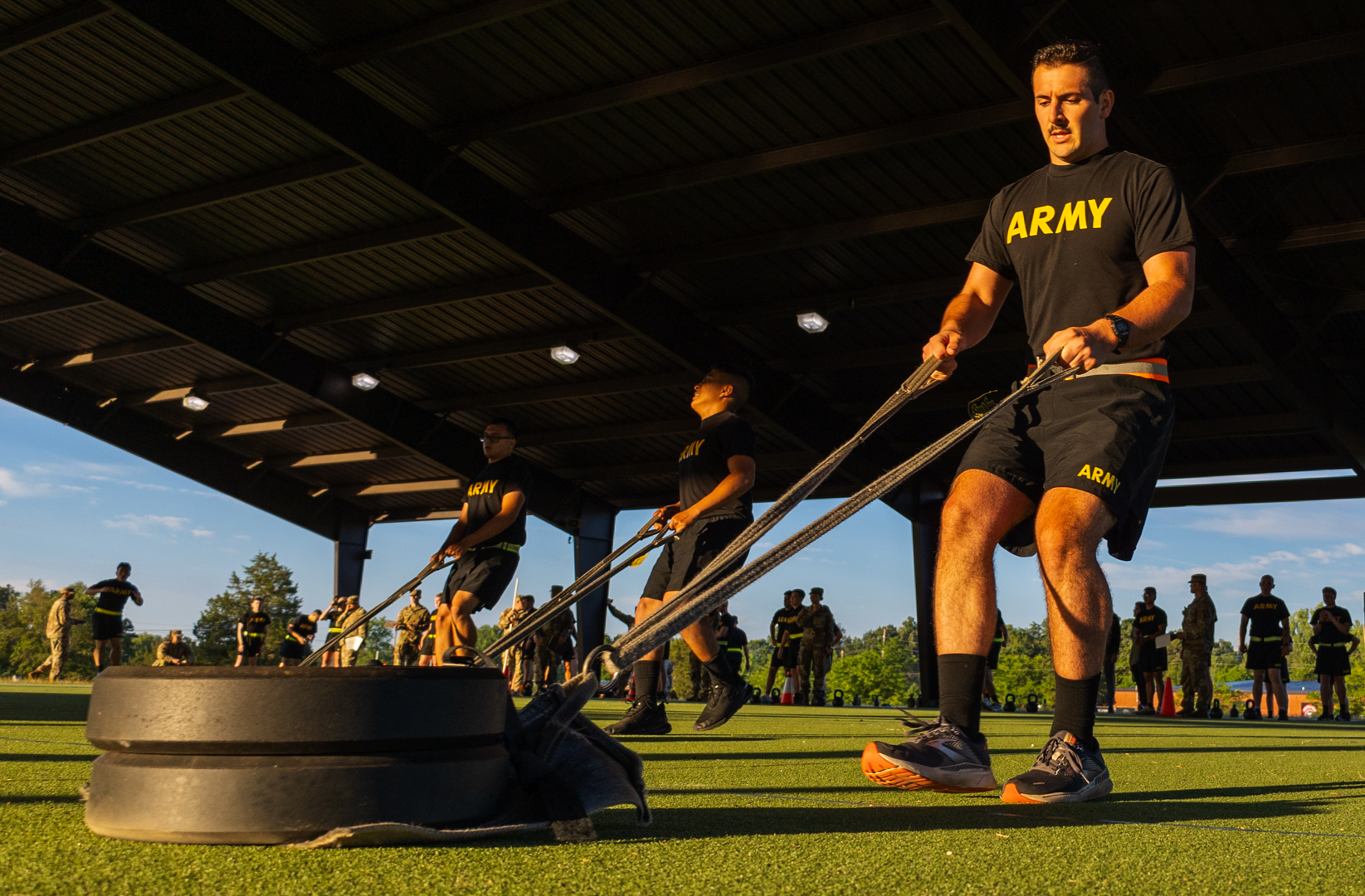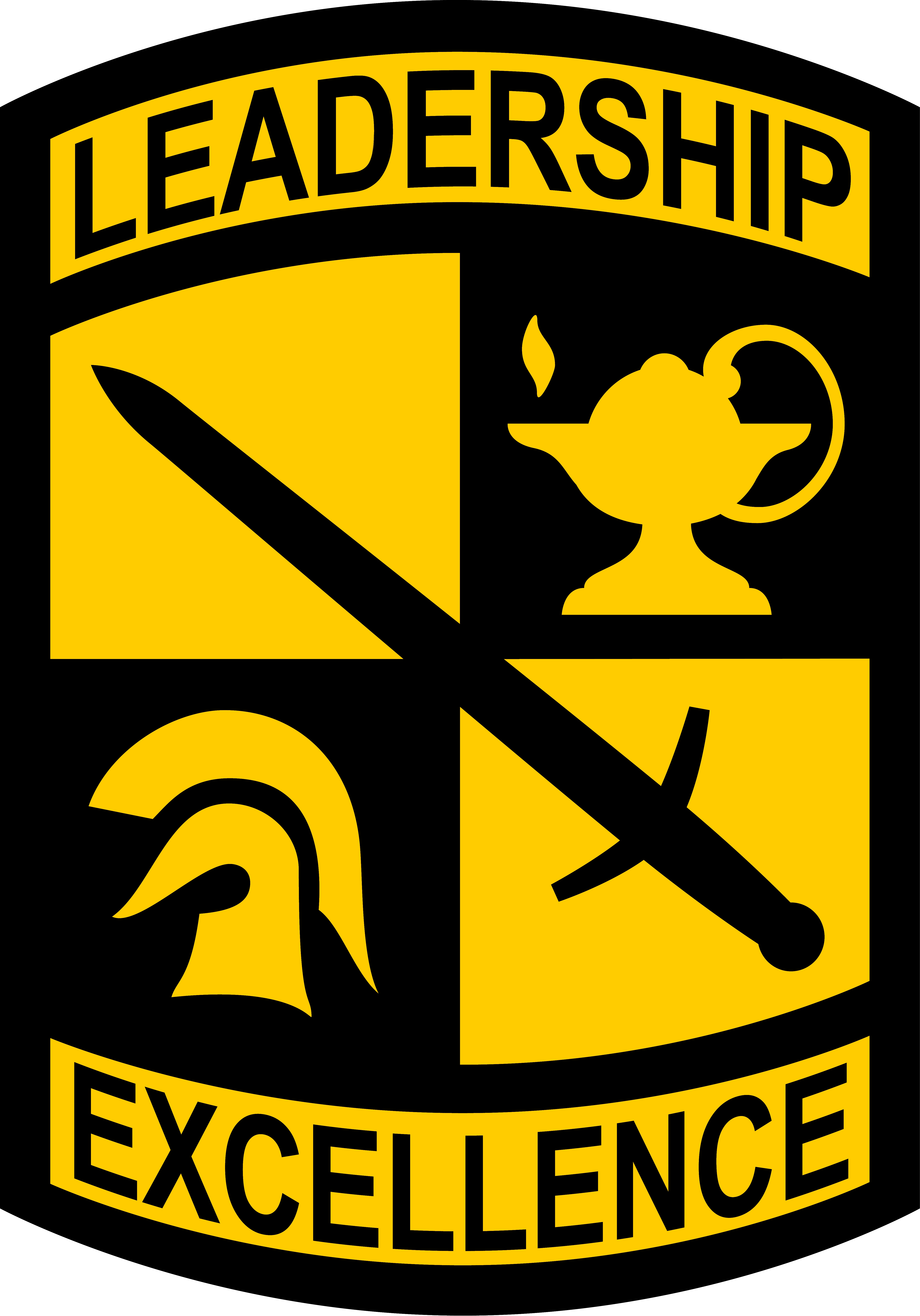
FORT KNOX, KENTUCKY– Cadets with 6th Regiment, Advanced Camp, rise before dawn to take part in the Army Combat Fitness Test on Fort Knox, June 28, 2024. The Army Combat Fitness Test is an important component in assessing Cadets physical readiness for Cadet Summer Training and the tasks that come with it.
2nd Lt. Zullydiana Gomez, Fort Liberty, 6th Regiment Adjutant General, detailed the ACFT’s significance. “The ACFT measures overall physical fitness, improves readiness, and reduces injuries.” said Gomez. “It’s crucial that soldiers are physically fit to uphold Army standards and align fitness with combat tasks.”
The ACFT comprises six events: the three-repetition deadlift, standing power throw, hand-release push-ups, sprint-drag-carry, plank, and a two-mile run. Each event is designed to mimic specific combat tasks, such as the sprint-drag-carry, which simulates pulling a battle buddy out of a danger zone. Scoring for the ACFT has evolved, taking gender and age into account, with points ranging from a minimum of 60 per event to a maximum of 100. A total score of 360 is required to pass, with the highest possible score being 600.
Timothy Townsend from the University of North Carolina at Chapel Hill shared his journey and the strategies he employed to excel in the ACFT. Townsend emphasized the importance of consistent training and focusing on form. “I knew the standards were getting tougher, so I focused on my form and took my time,” Townsend said. “I trained with ROTC and on my own every day to prepare for this.”
He advised future cadets to “exaggerate your form significantly to show your grader that you’re hitting the standard.” said Townsend. “No shortcuts and give 100%.”
Cadet Townsend, who enjoys deadlifts the most, found the plank exercise to be the most challenging. However, he overcame this by prioritizing and training rigorously. Reflecting on his decision to join ROTC, “I have a big family history in the Army. I’m proud to be the first officer on the Townsend side and serve a purpose bigger than myself.”
Ben Skelton from Western Michigan University shared his journey, highlighting the personal challenges he overcame to excel in the ACFT. Cadet Skelton, a former active-duty intel analyst, transitioned to the National Guard and ROTC after a significant personal loss during deployment. “I joined ROTC to be there for soldiers who are in the same position I was,” said Skelton. “I want to be the officer in their corner, fighting for them when they need it.”
Cadet Skelton emphasized the importance of maintaining a strong mindset and staying motivated. “Beforehand, I felt motivated, and now finishing strong, I feel even more motivated,” said Skelton. “For future cadets, don’t just aim for the minimum standards. Push for the maximum and support each other.”
Cadet Townsend and Skelton highlight the dedication, resilience, and teamwork fostered through not only ACFT training but also ROTC. Their stories serve as inspiration for future cadets, emphasizing the importance of preparation, perseverance, and striving for excellence in all aspects of Cadet Summer Training.



